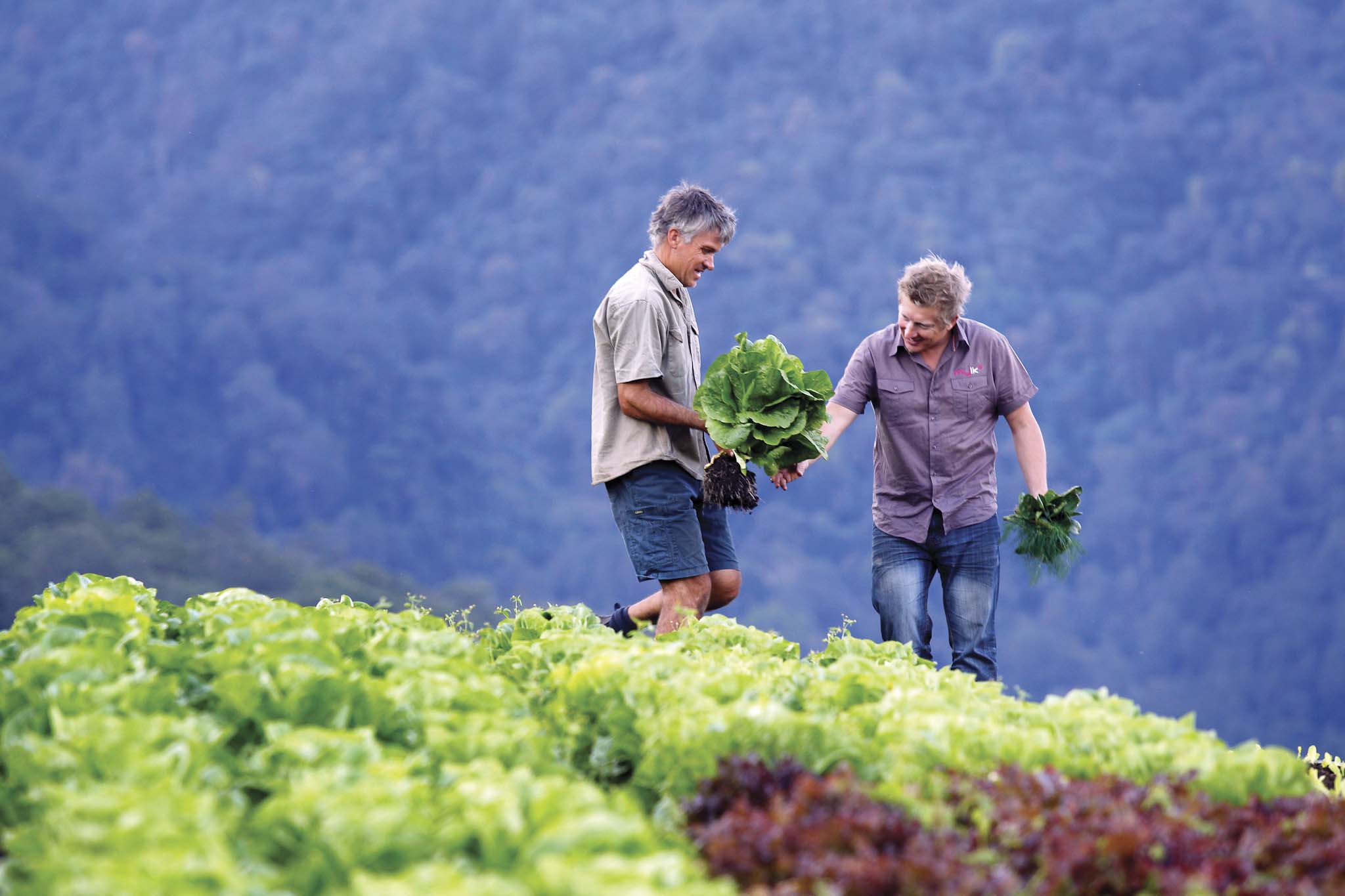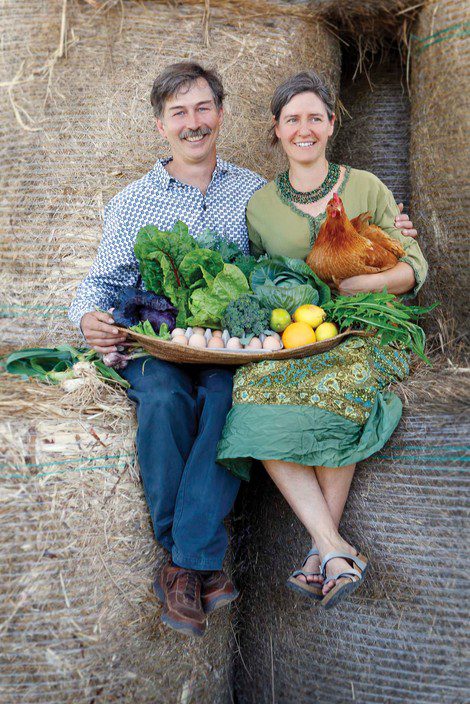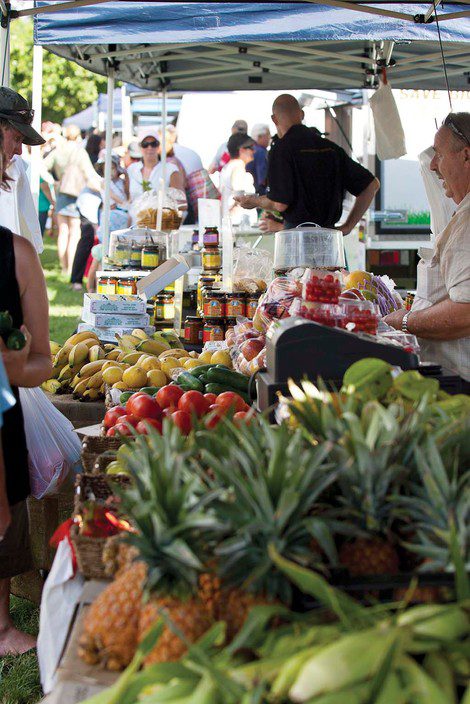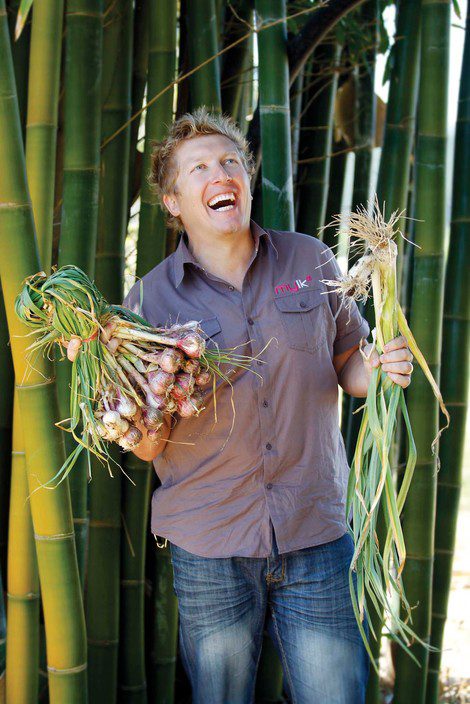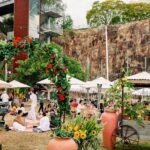GOURMET
Do we need a food revolution?
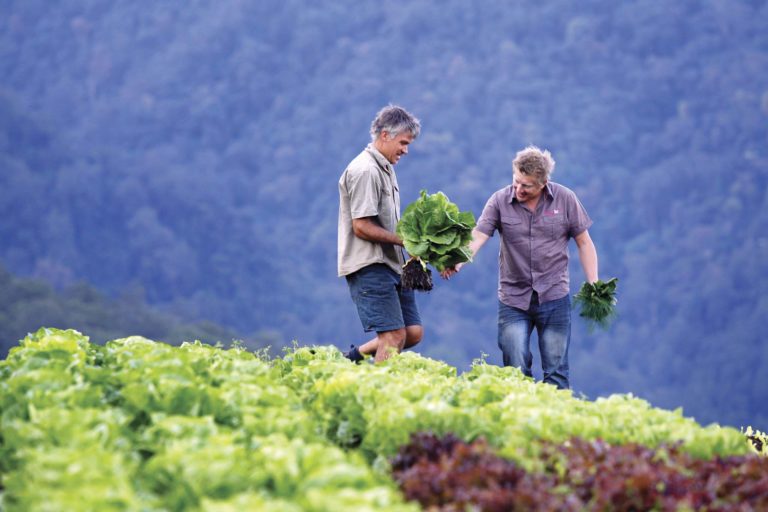
WORDS: PHOTOGRAPHY
The beginning of spring used to be a time foodies looked forward to with excitement. It was a time for the season’s storms to naturally charge the atmosphere with lightning and bond the atmospheric nitrogen for the new growth of plants. It was a time to look forward to the many fruits and vegetables that had lain dormant during winter, sprouting with new energy to be harvested in their prime. A time for growth, a time of plenty, a time that is only natural for a few months of the year. Now, our abundance is synthetic — our fertilizers, our growing seasons, and our attachment to the food we eat. We’ve grown accustomed to having most spring varieties all year round, synthetically reproduced in greenhouses to suit the consumers’ demand. But, as food sustainability specialist Simon Grigalius asks, is this a problem, and, if so, can we change it?
It’s fairly simple: if we don’t start eating with ethics, we won’t have a healthy food future to nourish us. Food security issues such as ethical eating, food sustainability, and farmers’ markets are all current topics that should be taken more seriously as society slowly drifts away from an understanding of food and the land.
The convenience of the supermarket has helped to shape the modern world, although more and more it seems to be shaping the modern diet. Unfortunately, what is in a corporation’s best interests and what is in a local farmer’s best interests is not always the same.
When people originally moved to cities and lacked the land or skills to grow their own food, the farmers’ markets used to be the place to buy and swap produce. Showcasing everything from baked and preserved goods to fresh produce, the markets have been a place for country folk to meet and talk about their week and swap stories about life, weather, and food.
Then came the supermarkets. The convenience of being able to buy processed and frozen meals was marketed to the masses in fierce but friendly advertising campaigns.
Why spend hours cooking when your friendly food company can save you precious hours by preparing ready-cooked meals, spreads, and sauces and also sell you typical household items all under the same roof?
Straight carrots, bloodless meat, shiny red apples, and cheap factory milk all wrapped in plastic for your convenience. Honed to economic efficiency, you can now enter a store, grab your groceries, and leave through automated checkouts without speaking to a single person.
But do you know the real story of where your food comes from? Or are you happy to believe the million-dollar ad campaigns, directed at promoting romantic images of lush, green meadows and happy animals, all playing their part to serve our growing appetite for cheap, convenient food?
Farmers’ markets are an essential part of our attachment to the real food cycle. Hearing the story of the producers, farmers, and craftsmen has always been a way of connecting to the earth through a second-hand experience, attaching us back to the natural systems.
A small-scale multi-use farmer needs to manage his land using methods that encourage natural laws and biodiversity. The more natural crops and animals are raised on the property, the greater the cycle is in harmony.
Animals, plants, soil, and insects are all essential in a healthy balance for the sustainability of a farm. The trees create wind barriers, hold the soil in place, and offer homes for birds. The birds play their part in keeping down the insect populations, essential to pollinate the plants and act as a closer link to the waste cycle, and so it goes for the cycle to continue. Every natural living thing plays a part in the harmony of the farm.
When corporations attempt to use an economic model to manage a natural system, the resulting impact to the environment can be extreme and unsalvageable.
Ecosystem services such as the water cycle, natural pollination, and even the organic waste cycle have never received the financial recognition by business, and as a result we now have a food system that is highly wasteful, unsustainable, and in natural debt.
Driven by chemicals and cheap energy, our food system is in need of a change, and the farmers’ market is a step in the right direction to bring back recognition and attachment to our food and its story. Listening to the stories of old tales handed down, hearing how the simple things such as weather or the price of water have such a huge impact on the lives of the people who are part of the land.
“No avocados for a few weeks; heavy rain came just as the flowers bloomed and buggered the lot” or “I’ll only have these for a few more weeks as the dams are empty and the well’s dried up” are just some of the many insights you may get when wandering the local farmers’ markets.
Farmers’ markets come in many shapes and sizes. You’ll find some that are merely middlemen who buy bulk at the major wholesale markets and on-sell it as a family business, and although they may not be farmers themselves, they still play their part in attaching the wider community to the food’s story.
However, the real farmers’ market is a collection of growers and producers from the neighbouring regions, trying to make a living off the land. From bush honeys to twisted carrots, heirloom tomatoes and native fruits, it’s worth the time to head to a real farmers’ markets, talk to the farmers about their food and listen to the story they’re more than willing to share.
Supporting small-scale farmers is not only helping rural communities and families to grow healthy and ethical food, but it also connects us back to the earth.
The new food trend essential to food sustainability is ethical eating. Ethical treatment of animals and the ethical treatment of the food can only have a positive outcome for the whole food supply chain.
It is past time — time to stop treating all food cheaply and thereby stop wasting it.
Society needs to realise the corporation’s main responsibility is to its shareholders; the story of food for them is money, efficiency, structure. Attempting to find transparency throughout the modern agro-industrial food supply chain is near impossible.
Step up: take responsibility for your health and your environment.
Take time out to visit some real farmers and farmers’ markets — take the family for a weekend or early morning drive. Find out who grew your dinner, why you can only get certain foods at certain times from specific regions, and what the story is.
By strengthening the bond between us and our natural food system, we can all do our part to support rural communities and improve local food security.
Local farmers’ markets
Looking for a farmers’ market in your local area? We’re spoilt for choice!
GOLD COAST REGION
Gold Coast Organic Market Miami State High School, Miami. Every Sunday
6am – 11.30am. http://gcorganicmarket.com
Marina Mirage Farmers Market Marina Mirage, 74 Sea World Drive, Main Beach. Every Saturday 7am –11am. http://www.facebook.com/marinamiragefarmersmarket
Burleigh Farmers Market Burleigh Heads State School, Gold Coast Highway, Burleigh Heads. Every Saturday 7am – 12 noon. http://www.goldcoastfarmersmarkets.com.au
Nerang Markets Lavelle Street, Nerang. Every Sunday 6.30am – 12 noon. http://www.goldcoastfarmersmarkets.com.au
Bundall Market, Home of the Arts (HOTA), 135 Bundall Road, Surfers Paradise 4217. Every Sunday 6am – 11.30am. http://www.goldcoastfarmersmarkets.com.au/
Mudgeeraba Sunset Markets Mudgeeraba Showgrounds, 115 Mudgeeraba Road, Worongary (corner Mudgeeraba Rd and Worongary Road). Every Friday 4pm – 8pm. http://www.mudgeerabasunsetmarket.com/
Palm Beach Currumbin Farmers Markets Palm Beach Currumbin State High School, Thrower Drive, Palm Beach 4223. Every Saturday 6am – 11.30am. http://www.yourlocalmarkets.com.au/
Helensvale Farmers Markets Helensvale State High School, Helensvale Road, Helensvale 4212. Every Saturday 6am – 11.30am. http://www.yourlocalmarkets.com.au/
Beenleigh Craft and Farmers Market Beenleigh Showgrounds, 38-44 James Street Beenleigh. Every Sunday 6am – 12 noon. http://www.logan.qld.gov.au/
N.O.W Fresh 3 Swan Lane, Mudgeeraba. Every Friday 8am – 2pm. http://www.nowfresh.com.au
Beechmont Farmers Markets Beechmont Community Centre, 1835 Beechmont Road, Beechmont. Every third Sunday of the month 8am – 12 noon. http://bapa.beechmont.org.au/market
TWEED HEADS & BYRON BAY REGION
Chillingham Markets Every second Sunday. http://www.tweed.nsw.gov.au/Markets
Kingscliff Markets Marine Parade, Kingscliff. Every second and fourth Saturday 7am – 1pm. http://www.kingscliffmarkets.com
Kingscliff Lantern Markets Lions Park (next to Cudgen Surf Life Saving Club). First Friday of the month 5pm – 9pm.
Pottsville Markets Pottsville Beach Neighbourhood Centre. First and third Sunday. http://www.tweed.nsw.gov.au/Markets
Tweed Heads Markets, Recreation Street Park, Recreation Street. Every Sunday 7am – 1pm. http://www.tweed.nsw.gov.au/Markets
Uki Farmers Market Uki Town Hall, Kyogle Road, Uki. Every Saturday 8am – 1pm.
Byron Farmers Market Butler Street Reserve. Every Thursday 8am – 11am. http://byronfarmersmarket.com.au
New Brighton Farmers Market New Brighton Oval, River St, New Brighton. Every Tuesday 8am – 11am. http://www.newbrightonfarmersmarket.org.au/about-us/
Rainbow Region Organic Market Lismore Showground, Alexandra Parade, Lismore. Every Tuesday 7.30am – 11am.
Bangalow Farmers Market Bangalow Hotel Carpark, 1 Byron St, Bangalow. Every Saturday 8am – 11am. http://www.byron-bay.com/markets/bangalow-farmers-market/


